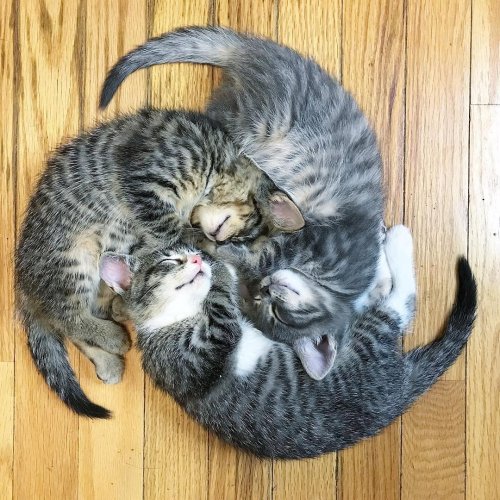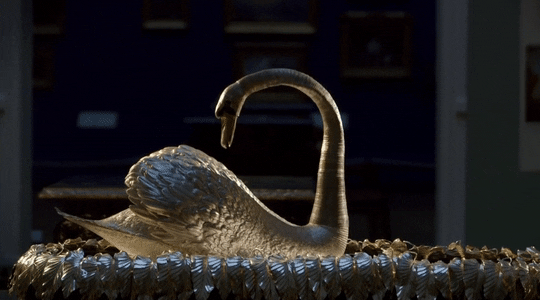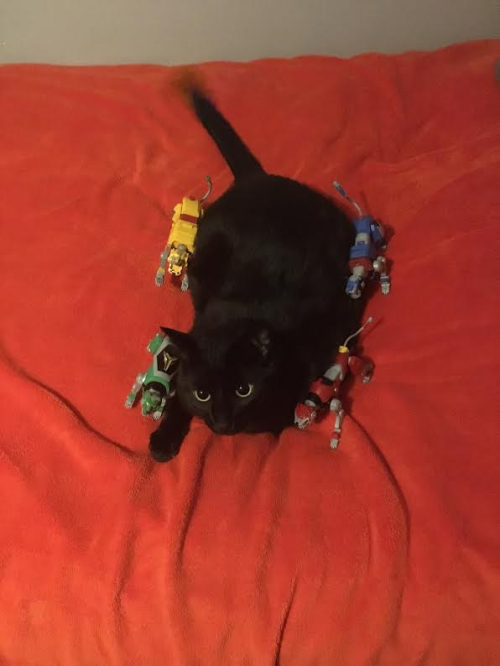Well My Week Has Been Exciting So Far.






Well my week has been exciting so far.
More Posts from Raindyedpastel and Others
hey, i need to fix up a hole in a (wool/ knit) sweater. the lady at the store i bought the right sort of yarn for it at said i needed to secure/ „catch“ all the stitches/ loose parts so the sweater doesn‘t end up unravelling over time. can you explain how best to do this or do you have any resources for it? i feel very overwhelmed and i don‘t wanna ruin my sweater by doing it wrong
Mending holes in knit fabric
The thing about knitting is that it's basically a collection of loops. If one loop gives in, the rest of the fabric risks unravelling, too. That's why this person mentioned "catching" all the stitches: if you miss one, your sweater might continue unravelling.

(Image source) [ID: a woven fabric (plain weave) versus a knit fabric (stockinette stitch).]
That probably sounds super stressful, but don't worry! There's different ways to fix knitting. Some are easier, and some are harder. Let's take a look.
Swiss darning:
The cleanest and most invisible fix is Swiss darning. This type of mending requires you to thread through the loops of the hole, and use those to knit new stitches. Swiss darning is probably the trickiest way to mend knits mentioned in this post.
If you've got a really small hole, you could also try duplicate stitch which doesn't require threading. This technique can also be used to reinforce worn-out spots in knitting, or even for embroidery.
Check out Patty Lyons' written guides on Swiss darning and duplicate stitch to see how it's done, or these YouTube guides on Swiss darning and duplicate stitch by Heather Storta and Stuart Moores Textiles.

(Image source) [ID: a black and white image showing how to do Swiss darning on a piece of knitting with a hole in it. Threads have been threaded between the loose knit loops, and a tapestry needle is weaving new knit stitches along these threads. Text: "Fig.3."]

(Image source) [ID: example of a hole in a gray piece of knitting that's been mended with the duplicate stitch. Six stitches have been mended with yellow yarn. Text: "Ta Da, a brand new section of knitting with no bulk - Swiss Darning Magic. PattyLyons."]
Woven darning:
If you don't feel like recreating knit stitches, you can also do woven darning on knit fabrics. The technique's the same as you would use for a woven item.
Note that a darned patch like this is not stretchy, unlike its surrounding fabric. You can somewhat remediate this by darning diagonally, but it'll still be less stretchy than actual knit fabric.

(Image source) [ID: close-up on a hole in a swatch of beige knitting that's been patched with a woven darn in light blue, dark blue, red, pink, and yellow yarn.]

(Image source) [ID: vintage instructions on how to darn a hole.]
Knitting over the hole:
You can also knit a patch and sew it across the hole, or pick up stitches around your hole and knit over it. Don't forget to finish off the loose stitches at the edge of the hole on the wrong side. Loop your yarn through them, making sure to catch them all, and secure them.
This YouTube video by VeryPink Knits will show you how to knit across a hole. If you're more of a written tutorial person, take a look at this Berroco article on knit patches.

(Image source) [ID: a gray sweater on which a red knit patch has been added to cover up a hole.]
Crochet:
If you're an avid crocheter, crochet's also an option to fix holes in knits.

(Image source) [ID: close-up on the shoulder of a blue knit sleeveless top with a hood. A hole has been mended with crochet, using red and brown thread. Text: "Cucicucicoo".]
Picking up dropped stitches:
If just one line of stitches was damaged, you could try picking up the dropped stitches with a crochet hook.
Fabric patches:
If you'd rather not knit or crochet anything, you could just sew a patch over the hole. First sew around the hole to stabilise the stitches, then sew a piece of fabric over or under the hole. Sandwich the hole between two pieces of fabric for extra security.
Use stretchy fabric and a stitch that allows for stretch to retain the stretch of the original knit material. If you do use a patch of woven fabric, note that this will effect the material's stretchiness.

(Image source) [ID: close-up on the neckline of a gray knit sweater. A hole has been mended with a green patch of fabric and sashiko stitching in yellow thread.]

(Image source) [ID: close-up on the elbow of a black and white knit sweater. The elbow has been patched with a heart-shaped scrap of red fabric with white polkadots and sewn on with a whipstitch.]
Conclusion:
This list is not exhaustive, but will give you some ideas on how to get started. You can go as visible or invisible as you want with these techniques.
Remember to use a yarn that's similar in weight and fibre as your sweater! If you darn a polyester sweater with real wool, you risk the wool patch felting in the wash, for example.
THANK YOU FOR 2000!
Today I hit 2k followers and I can honestly say I never expected to hit this milestone when I started my blog a couple months ago. I don’t think I’ve ever been so inspired to create in my life and your comments and suggestions are like animal crackers to my soul.
I especially love when you tag me in very angsty things :’D As a thank you I’d like to hold another giveaway!
Grand Prize
A wallpaper sized illustration of a character of your choice


(Doesn’t have to be facing right……)
Runner Ups
A mini paint for one person

A stupid doodle for one person

Rules!
✦ Followers only - new followers are fine
✦ Only rebogs count for an entry, and you only get 1! Please don’t reblog more than once (it made it very hard keeping track of nearly 1000 names)
✦ Please keep your ask box open so I can message you if you win. If I can’t get in contact within 24 hours then I’ll pick someone else.
✦ Winners will be selected by a random number generator
✦ Giveaway ends October 1st!
If you have any questions don’t hesitate to ask <3

oh………..
it’s a kitty hurricane.
You were one of the 20-40ish senators who conspired to kill Julius Caesar, but did NOT stab.







The Silver Swan, built by John Joseph Merlin and James Cox, 1773.
Source: Mechanical Marvels, Clockwork Dreams (BBC)


Noodle 2.0
working with textiles is a trap. first they lure you in with knitting. then you pick up crochet (understandable enough). next you start getting curious in fiber. you learn how to spin (okay that’s a bit extra). weaving is cool, right? you now own a loom. heck, while we’re at it, why not starting making your own clothes (this is getting out of hand)? spinning is no longer enough for you — you need something stronger. you learn how to dye (stop i’m begging). dye is fun, but it’d be nice to have your own source of fiber. you are now a shepherd.
EDIT: this has unfortunately somehow found its way into terf circles. anyway op is trans and i hope all fellow trans people people have wonderful and lovely days.

form voltron
it’s december 1 where’s the christmas tail kitten bring him to me
-
 tenuous-grace reblogged this · 3 weeks ago
tenuous-grace reblogged this · 3 weeks ago -
 einkleindatagal liked this · 4 weeks ago
einkleindatagal liked this · 4 weeks ago -
 goosehasapencil liked this · 1 month ago
goosehasapencil liked this · 1 month ago -
 carasilverfern reblogged this · 2 months ago
carasilverfern reblogged this · 2 months ago -
 carasilverfern reblogged this · 2 months ago
carasilverfern reblogged this · 2 months ago -
 drawing-myself-in-and2-death reblogged this · 2 months ago
drawing-myself-in-and2-death reblogged this · 2 months ago -
 drawing-myself-in-and2-death liked this · 2 months ago
drawing-myself-in-and2-death liked this · 2 months ago -
 warseraph reblogged this · 2 months ago
warseraph reblogged this · 2 months ago -
 wolfwillowisp reblogged this · 2 months ago
wolfwillowisp reblogged this · 2 months ago -
 thebelovedlion liked this · 2 months ago
thebelovedlion liked this · 2 months ago -
 existentially-confused-crow liked this · 2 months ago
existentially-confused-crow liked this · 2 months ago -
 deadcroisany liked this · 2 months ago
deadcroisany liked this · 2 months ago -
 well-thats-queer liked this · 2 months ago
well-thats-queer liked this · 2 months ago -
 m00nbunny1 liked this · 2 months ago
m00nbunny1 liked this · 2 months ago -
 ethereal-forest-furry reblogged this · 2 months ago
ethereal-forest-furry reblogged this · 2 months ago -
 ethereal-forest-furry liked this · 2 months ago
ethereal-forest-furry liked this · 2 months ago -
 flamingears reblogged this · 2 months ago
flamingears reblogged this · 2 months ago -
 flamingears liked this · 2 months ago
flamingears liked this · 2 months ago -
 a-spell-for-paris reblogged this · 2 months ago
a-spell-for-paris reblogged this · 2 months ago -
 maximumfuckingsass reblogged this · 3 months ago
maximumfuckingsass reblogged this · 3 months ago -
 maximumfuckingsass liked this · 3 months ago
maximumfuckingsass liked this · 3 months ago -
 alistuff-zzz reblogged this · 3 months ago
alistuff-zzz reblogged this · 3 months ago -
 aratwithafancyhat liked this · 3 months ago
aratwithafancyhat liked this · 3 months ago -
 corvidsforhire reblogged this · 3 months ago
corvidsforhire reblogged this · 3 months ago -
 purple-swirrls reblogged this · 3 months ago
purple-swirrls reblogged this · 3 months ago -
 purple-swirrls liked this · 3 months ago
purple-swirrls liked this · 3 months ago -
 fang-feraligatr-blog reblogged this · 3 months ago
fang-feraligatr-blog reblogged this · 3 months ago -
 fadingduckinternetc liked this · 3 months ago
fadingduckinternetc liked this · 3 months ago -
 paragonofdespondence liked this · 3 months ago
paragonofdespondence liked this · 3 months ago -
 kittiinoir liked this · 4 months ago
kittiinoir liked this · 4 months ago -
 raremoths reblogged this · 4 months ago
raremoths reblogged this · 4 months ago -
 raremoths liked this · 4 months ago
raremoths liked this · 4 months ago -
 ilikegaydndshit reblogged this · 4 months ago
ilikegaydndshit reblogged this · 4 months ago -
 ilikegaydndshit liked this · 4 months ago
ilikegaydndshit liked this · 4 months ago -
 blueboxbeagle reblogged this · 4 months ago
blueboxbeagle reblogged this · 4 months ago -
 shagnasty6553 liked this · 4 months ago
shagnasty6553 liked this · 4 months ago -
 ginkgo-leaves reblogged this · 4 months ago
ginkgo-leaves reblogged this · 4 months ago -
 dunebeetle liked this · 5 months ago
dunebeetle liked this · 5 months ago -
 voidster69 reblogged this · 5 months ago
voidster69 reblogged this · 5 months ago -
 voidster69 liked this · 5 months ago
voidster69 liked this · 5 months ago -
 taro-pdf liked this · 5 months ago
taro-pdf liked this · 5 months ago -
 this-way-up-for-peace-of-mind liked this · 5 months ago
this-way-up-for-peace-of-mind liked this · 5 months ago -
 spinneryesteryear reblogged this · 6 months ago
spinneryesteryear reblogged this · 6 months ago -
 annakix7z liked this · 6 months ago
annakix7z liked this · 6 months ago -
 mickaishiding liked this · 7 months ago
mickaishiding liked this · 7 months ago -
 smaragdbird reblogged this · 7 months ago
smaragdbird reblogged this · 7 months ago -
 cinnamonmindfuck reblogged this · 7 months ago
cinnamonmindfuck reblogged this · 7 months ago -
 zeryuo reblogged this · 7 months ago
zeryuo reblogged this · 7 months ago -
 natdafat reblogged this · 7 months ago
natdafat reblogged this · 7 months ago

I literally made this account to follow tumblr users and like stuff I find. Now featuring occational reblogs. 28|she/they
123 posts







